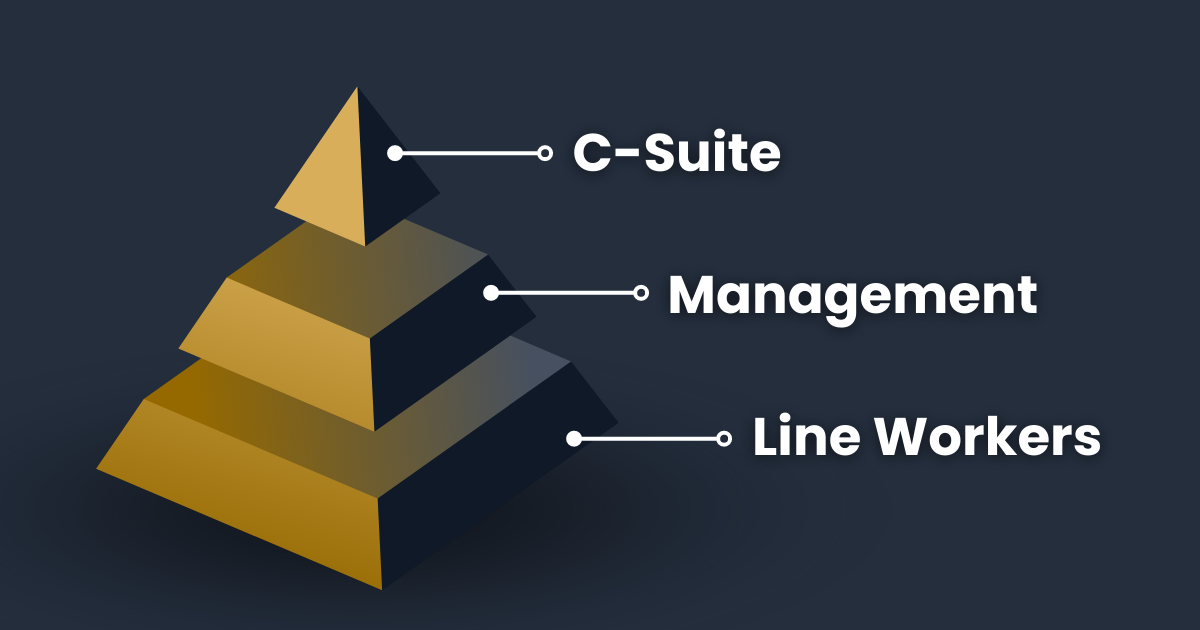Building Team Morale is more than holding an annual company picnic, smiling at everyone, and providing incentives for productivity. Team Morale is 100% wrapped up in company culture and we all know that the best way to build a powerful culture is hard work and patience!
At Archbridge Coaching & Consulting, we believe in the power of the ABC Model – Always Be Contracting (Source: Peter Hawkins). The ABC Model focuses on establishing and maintaining open lines of communication, setting expectations, and defining roles and responsibilities. It places emphasis on feedback loops that are consistent with progress.
By maintaining an ongoing process of contracting, where discussions about goals, tasks, and outcomes are held regularly and transparently, teams can align their efforts, minimize misunderstandings, and ensure that everyone is on the same page. This approach encourages a proactive and collaborative approach to working relationships, fostering a culture of clarity, accountability, and effective teamwork.
This article will provide you with six steps to execute the Always be Contracting Model!
Let Me Tell You About Laura
Laura Turner is a hard working professional. She had always been passionate about making a positive impact on the world, and this drive led her to a mid-level leadership position at a fast-growing tech company called InnovateX. With a team of talented and motivated individuals, Laura’s aspirations seemed attainable. However, the path to effective leadership would prove to be more challenging than expected.

In the beginning, Laura’s enthusiasm was infectious. The team was excited to work on cutting-edge projects, fueled by a sense of purpose and camaraderie. However, as time went on, a subtle shift began to take place. Meetings that once buzzed with energy started feeling lackluster and disorganized. Collaborative brainstorming sessions turned into one-sided discussions, leaving team members feeling unheard and undervalued. The symptoms of poor team morale were beginning to emerge.
The good news is that once Laura recognized the downward spiral, she began to reflect on the right leadership approach.
Laura started by actively listening to her team members, getting to know their unique personality and communication styles, creating a safe space for open dialogue, and valuing every individual’s input. Laura also worked to better understand her own personality and communication styles, ensuring that expectations were clear and that everyone understood their role in the larger vision.
Slowly but surely, the tide began to shift. Team members responded positively to the changes, and the symptoms of poor morale started to dissipate.
With perseverance and a willingness to learn, Laura transformed from a struggling leader into an inspiring one. The journey wasn’t without its challenges, but it ultimately led to a stronger, more cohesive team at InnovateX.
The story of Laura Turner is the same as so many of our stories. We have to struggle through a decline before we learn a better way forward. Remembering our own challenges can be a helpful reminder that effective leadership is a continuous process of growth and adaptation, one that requires empathy, self-awareness, and a genuine commitment to the well-being of those you lead.
Whether your story is just like Laura or carries nuances, we encourage you to explore the following steps to building stronger team morale.
Determining the Source of the Morale Problem
When there is a team morale problem, it can often be pinpointed to a source. That source might be a smaller team, or an individual. Regardless, fixing it requires that you identify where in the organizational structure it starts.

Take a look at this illustration. There are three levels of hierarchy: C-Suite, Management, and Line Workers. Obviously real organizational charts are more complicated. When you work to determine the source of a workplace morale problem, it matters where on the org chart that individual or smaller team lands. Because likely, the morale problem is trickling down to all the levels below it.
To boost employee morale, you have to start at the highest level that is impacted and work down. If you don’t, low morale will always exist. And, frankly, even if the problem doesn’t start at the top, the leadership team might benefit from being helpful in the transformation.

6 Steps to Shifting Team Morale with the ABC Model
Once you determine where the low morale starts, shifting team morale from struggling to thriving is a complex process that requires deliberate and strategic actions.
As we mentioned above, we believe good leadership starts with the ABC Model – Always Be Contracting. This requires a constant awareness of the context a leader is operating within, and a willingness to learn and adapt as the leader moves forward. Here are six key steps, illustrated with examples of how Laura employed these techniques to lead her team towards success with the ABC model.

Step 1: Using Personality and Communication Style Assessments to Better Understand Oneself and Each Other
Understanding the unique personalities and communication styles of team members is essential for fostering effective collaboration and minimizing conflicts. Personality assessments provide valuable insights into individual preferences and behaviors, enabling leaders to tailor their communication and management approach accordingly.
Laura’s approach: Drawing from the insights of the “Myers-Briggs Type Indicator” and the “DiSC Personality Assessment,” Laura encouraged her team members to take these assessments. By understanding their own and their colleagues’ personality traits, team members gained awareness of how different communication styles and work preferences could contribute to the team’s success. For instance, Laura learned that some team members were more detail-oriented, while others were visionary thinkers. By using the ABC Model (Always Be Contracting), this new knowledge allowed her to shift tasks that aligned with each individual’s strengths, leading to higher job satisfaction and engagement.
Furthermore, Laura integrated the insights from these assessments into team meetings and interactions. She created a communication guide that outlined each team member’s preferred communication style and how best to collaborate with them. This approach, supported by research from the International Journal of Business and Social Science, facilitated more effective communication and minimized misunderstandings.

Step 2: Open Communication and Active Listening
Effective communication is the foundation of a high-functioning team. Open channels of communication foster trust, collaboration, and a sense of belonging among team members. Actively listening to your team’s concerns and feedback ensures that everyone feels valued and understood.
Laura’s Approach: Recognizing the breakdown in communication, Laura started conducting regular one-on-one meetings with team members. According to Gallup, employees who have regular check-ins with their managers are three times more likely to be engaged in their work. This is another way to incorporate the ABC Model (Always Be Contracting) into regular workdays. By listening attentively and addressing concerns, Laura showed her commitment to her team’s well-being.

Step 3: Clear Goal Setting and Expectations
Clearly defined goals and expectations provide a sense of purpose and direction for the team. When team members understand their roles and responsibilities, they are more likely to feel motivated and aligned with the organization’s mission.
Laura’s Approach: Laura revamped the team’s project management process, implementing SMART goals (Specific, Measurable, Achievable, Relevant, Time-Bound) for each project. This approach, supported by research from the American Psychological Association, enhances goal clarity and employee motivation. By setting achievable milestones and regularly tracking progress, Laura empowered her team to feel a sense of accomplishment.

Step 4: Recognition and Rewards
Recognition and rewards play a vital role in boosting morale and motivation. They can also be a great way to reinforce company values. Acknowledging and celebrating the team’s achievements and individual contributions can have a significant impact on job satisfaction.
Laura’s Approach: Drawing inspiration from the “Employee Recognition Report” by Achievers, Laura introduced a peer recognition program where team members could nominate each other for outstanding efforts. This not only brought back good employee morale, but also improved peer relationships and collaboration. Additionally, Laura instituted a quarterly awards ceremony to celebrate achievements, aligning with research from Harvard Business Review on the importance of recognition in fostering a positive workplace culture. These are both excellent examples of incorporating the leadership practice of the ABC Model (Always Be Contracting) into the workplace.

Step 5: Professional Development and Growth Opportunities
Investing in your team’s professional development demonstrates your commitment to their success. Offering opportunities for skill enhancement and career advancement can elevate team morale and job satisfaction.
Laura’s Approach: Laura initiated a skills development program tailored to individual team members’ career aspirations. This program included workshops, courses, and mentoring opportunities to enhance both technical and soft skills. By providing avenues for growth, Laura not only improved the team’s morale but also contributed to higher retention rates.

Step 6: Seek Help and Leverage Professional Coaching/Consulting for Outside Perspective and Support
Recognizing the complexity of team dynamics and the challenges of leadership, seeking external guidance from professional coaches or consultants can offer fresh insights, specialized expertise, and tailored strategies to navigate obstacles and enhance team morale.
Laura’s Approach: Understanding that leadership is a continuous journey of growth, Laura decided to engage a professional leadership coach. She knew that she was part of the problem and was having a hard time trying to fix herself and the team from the team leader positions. So, with the coach’s guidance, Laura was able to reflect on her leadership style, identify blind spots, and fine-tune her approach based on proven strategies and industry best practices.
